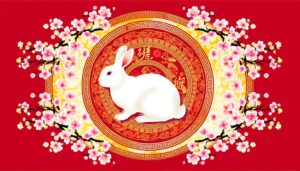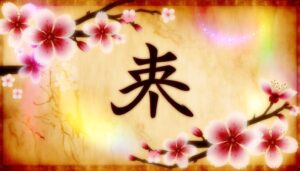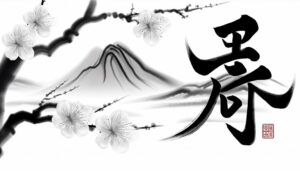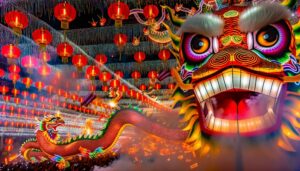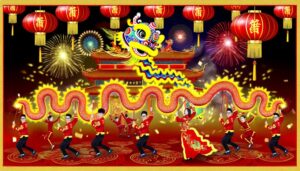How to Discover the Perfect Chinese Symbol for ‘Family Forever’
The Chinese symbol for 'family forever' is deeply rooted in ancient calligraphy and literature, reflecting profound historical and cultural significance. Originating from early scripts like the Oracle Bone Script, the character evolved through Confucian principles of filial piety and ancestral worship.
The intricate strokes symbolize unity, continuity, and eternal kinship, embodying a revered ethos of familial bonds. Featured prominently in art and calligraphy, the symbol remains prevalent in modern contexts, representing an unbroken lineage and emotional ties.
Contemporary interpretations continue to honor its heritage, bridging past traditions with present values. Discover the nuanced facets of this enduring motif.
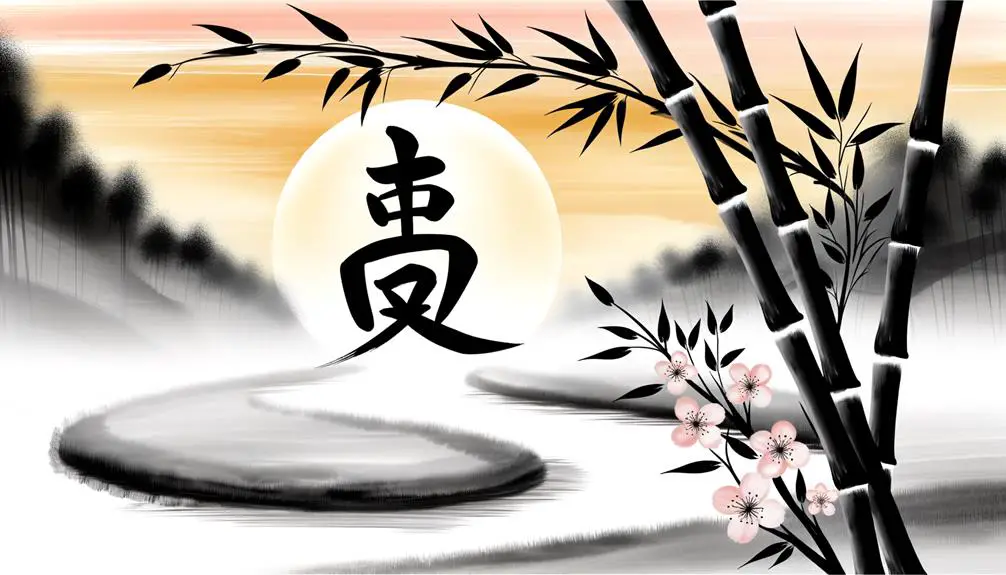
Key Takeaways
- The Chinese character for 'family' integrates symbols for longevity and eternity, emphasizing perpetual kinship.
- Confucian values of filial piety and ancestral worship heavily influence the symbol's meaning.
- It adorns household items during festivals like Lunar New Year, reflecting cultural significance.
- Traditional calligraphy styles like Kaishu and Xingshu convey the symbol's aesthetic and philosophical depth.
- The symbol is a popular motif in tattoos, symbolizing enduring familial bonds and heritage.
Historical Origins
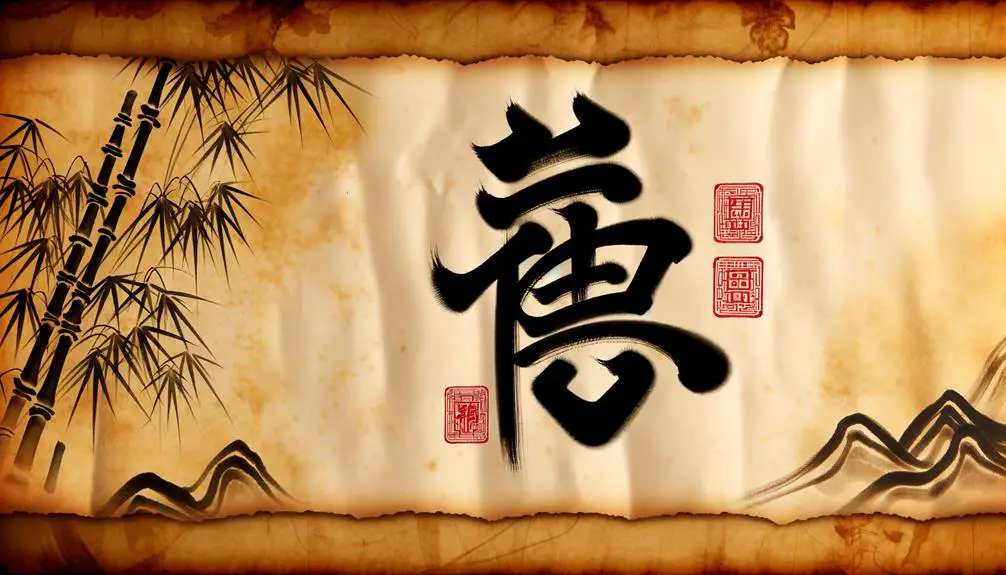
The historical origins of the Chinese symbol for 'family forever' can be traced back to ancient Chinese calligraphy and literature, where familial bonds and continuity were deeply revered and symbolically represented.
Early Chinese scripts, such as Oracle Bone Script and Bronze Script, often included characters that denoted family structures and generational lineage. These characters evolved over centuries, reflecting the Confucian values of filial piety and ancestral worship, integral to Chinese society.
Texts from the Zhou and Han dynasties reveal a nuanced linguistic development where the character for 'family' was intertwined with symbols of permanence and unity. This evolution underscored a societal emphasis on the eternal nature of family, embedding these ideals into the fabric of Chinese written language.
Cultural Significance
In examining the cultural significance of the Chinese symbol for 'family forever,' one must consider its profound integration into various aspects of Chinese daily life, rituals, and artistic expressions. This emblem is omnipresent in familial gatherings, adorning household items during festivals like Lunar New Year, and is often inscribed in calligraphy, ceramic art, and textiles.
It embodies the Confucian principle of filial piety, underscoring intergenerational bonds and the perpetuation of family lineage. The symbol acts as a tangible representation of an enduring cultural ethos, reflecting the collective consciousness that values unity, respect, and continuity.
Its recurring presence in traditional and contemporary practices signifies a deeply rooted appreciation for family cohesion and the perpetuation of ancestral heritage.
Symbolic Elements
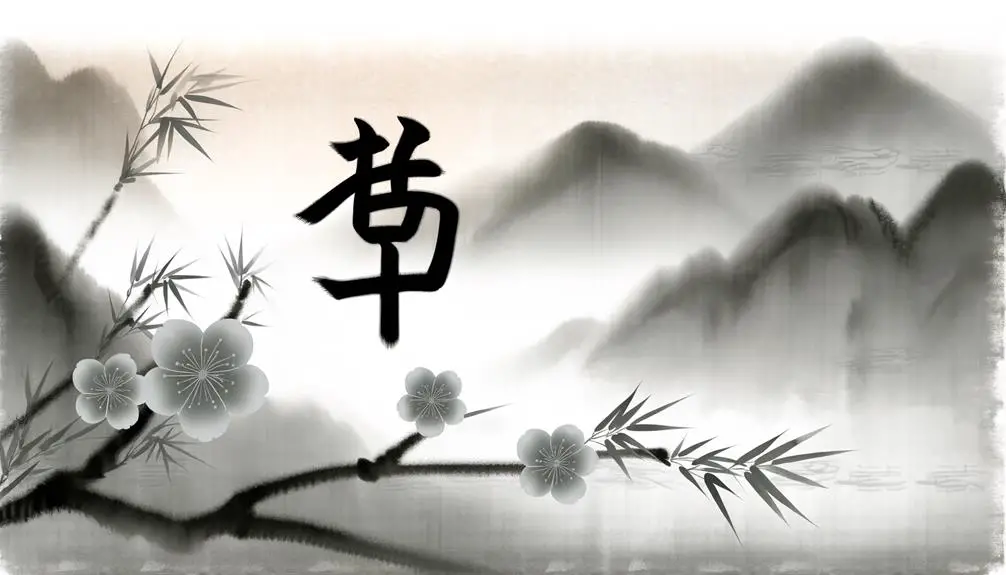
Encompassing both visual elegance and profound meaning, the symbolic elements of the Chinese character for 'family forever' intricately weave together strokes that collectively convey notions of unity, continuity, and generational respect.
The character is composed of various radical components, each contributing to the overarching theme. Central to the structure is the radical for 'family' (家), symbolizing the household and lineage. This is often combined with elements denoting longevity and eternity, such as 永 (yǒng) meaning 'eternally'.
The meticulous arrangement of these strokes is not arbitrary but purposefully designed to evoke a sense of perpetual kinship and ancestral reverence. The character consequently serves as a visual representation of the enduring bonds that define familial relationships in Chinese culture.
Different Interpretations
Building upon the intricate symbolism of the Chinese character for 'family forever,' various interpretations emerge that reflect the diverse cultural, historical, and philosophical contexts in which this character is embedded.
In Confucian thought, it signifies enduring familial bonds and the perpetuation of ancestral lineage, emphasizing filial piety and respect.
Taoist interpretations often view it through the lens of natural harmony and balance, suggesting an eternal, cyclical connection among family members.
Historically, the character has been inscribed on ancestral tablets, symbolizing an unbroken lineage and continuity.
Additionally, in modern contexts, it resonates with the themes of unity and resilience, uniting traditional values with contemporary familial experiences.
These multifaceted interpretations underscore its profound and enduring significance across time and belief systems.
Calligraphy Styles
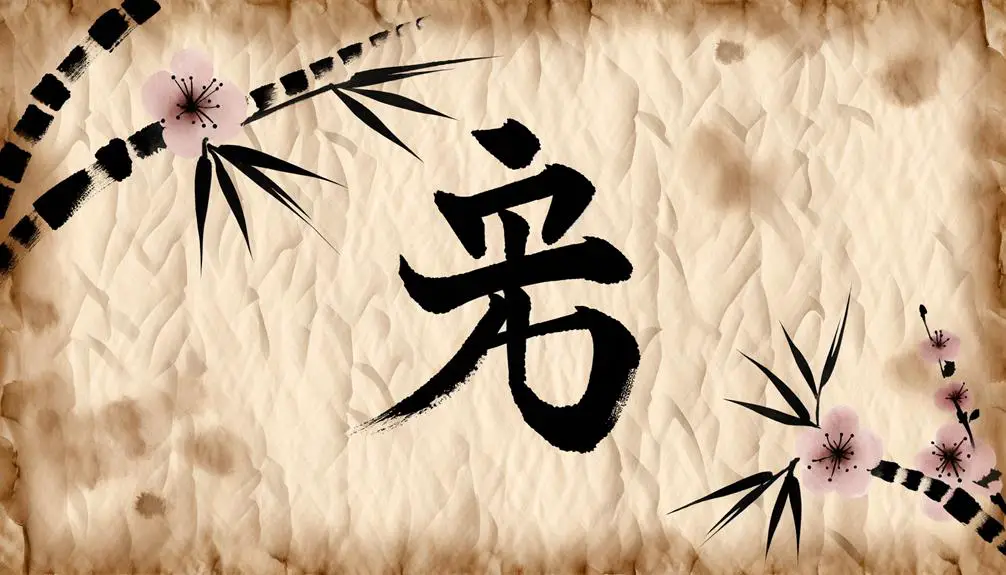
The exploration of calligraphy styles reveals a rich tapestry of traditional brush techniques and modern artistic interpretations, each bringing its own nuance to the Chinese symbol for 'Family Forever.'
Traditional brush techniques emphasize the fluidity and precision of each stroke, often imbuing the symbol with a sense of historical continuity.
In contrast, modern artistic interpretations may prioritize aesthetic innovation, while still respecting the symbolic meanings embedded in each stroke, thereby creating a dialogue between past and present.
Traditional Brush Techniques
Traditional Chinese brush techniques, integral to the art of calligraphy, encompass a variety of distinct styles such as Kaishu (standard script), Xingshu (semi-cursive), and Caoshu (cursive), each with its own unique aesthetic and historical significance. Kaishu, known for its clarity and legibility, is often utilized in formal and official documents. Xingshu bridges the gap between the rigidity of Kaishu and the fluidity of Caoshu, offering a more informal yet structured appearance. Caoshu, characterized by its swift and flowing strokes, conveys a sense of spontaneity and emotion. These styles are not merely about visual appeal but also embody cultural values and philosophical underpinnings.
| Style | Characteristics | Usage |
|---|---|---|
| Kaishu | Clear, Legible | Formal documents, inscriptions |
| Xingshu | Semi-cursive, Balanced | Informal writings, letters |
| Caoshu | Flowing, Expressive | Artistic expression, poetry |
Modern Artistic Interpretations
With the advent of contemporary art movements, modern artistic interpretations of traditional Chinese calligraphy have emerged, blending classical techniques with innovative visual elements to create a dynamic and evolving art form.
Artists now experiment with non-traditional materials and varied brushstrokes, incorporating abstract and minimalist aesthetics. This approach reimagines the symbol for 'Family Forever' by juxtaposing fluidity with structure, thereby preserving its historical essence while introducing a modern sensibility.
The integration of digital tools further expands the artistic possibilities, enabling the creation of intricate, multi-dimensional representations. These contemporary interpretations invite viewers to engage with the symbol on multiple levels, fostering a deeper appreciation for both its cultural significance and its artistic versatility.
Symbolic Stroke Meanings
In Chinese calligraphy, each stroke carries profound symbolic meanings that vary across different calligraphy styles, reflecting both the aesthetic philosophy and the cultural depth of the written characters.
The meticulous brushwork in styles such as Kaishu (Standard Script) embodies clarity and order, symbolizing stability and tradition.
Conversely, the fluidity of Caoshu (Cursive Script) conveys spontaneity and emotional expressiveness, often evoking the dynamic essence of human experiences.
Xing Shu (Running Script) strikes a balance, merging legibility with a graceful flow, indicative of harmony and adaptability.
These stylistic nuances not only illustrate the visual beauty of Chinese characters but also encapsulate the cultural values and historical contexts that underpin this ancient art form.
Understanding these strokes enhances one's appreciation of calligraphy's rich symbolism.
Modern Usage
The Chinese symbol for family forever has found renewed relevance in contemporary society, particularly within the domains of digital communication and popular culture.
In the digital age, this symbol is frequently utilized in online platforms, from social media avatars to emoticons, signifying enduring familial bonds. Moreover, its prevalence in popular culture manifests through its incorporation into fashion, jewelry, and home décor, often as a tattoo or an aesthetic element.
This resurgence can be attributed to a growing global appreciation for cultural symbols and their meanings. The symbol's adoption in various media forms underscores an increasing desire to express timeless values in a rapidly changing world.
This, its modern usage reflects both a homage to tradition and an adaptation to current cultural dynamics.
Symbol in Art
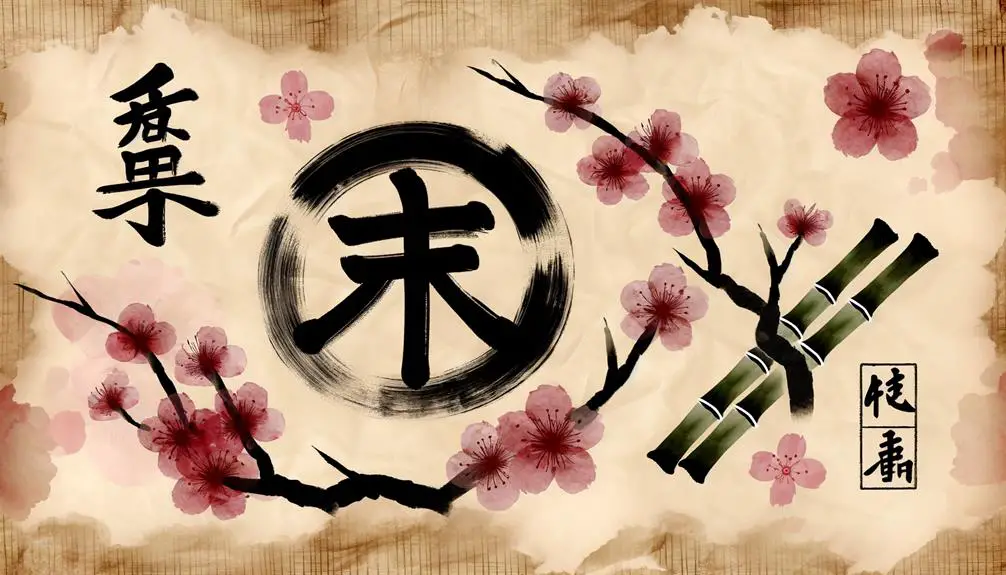
The Chinese symbol for family forever holds a prominent place in the world of art. It manifests through traditional calligraphy techniques that emphasize brushstroke precision and expressive form.
In contemporary artistic practices, this symbol has been adapted within modern art contexts, reflecting both artistic innovation and cultural preservation.
Its profound significance is evident in its popularity as a motif in tattoos. It symbolizes enduring familial bonds and cultural identity.
Traditional Calligraphy Techniques
Mastering traditional calligraphy techniques demands an understanding of the precise brush strokes and disciplined practice that are crucial to accurately conveying the Chinese symbol for 'Family Forever.'
Each stroke, from the initial downstroke to the concluding flourish, must be executed with intentionality and fluidity. The brush, held at a specific angle, interacts with the rice paper to produce varying thicknesses of ink that define the character's elegance.
In the context of family, the symbol's structure emphasizes interconnectedness and continuity, mirroring the values it represents. Practitioners must internalize the rhythm and balance inherent in these techniques, as any deviation can alter the symbol's meaning and aesthetic.
Rigorous training in these methods safeguards the preservation of this intricate art form.
Symbol in Modern Art
Building on the precision and intentionality of traditional calligraphy, the Chinese symbol for 'Family Forever' has found renewed expression and significance in modern art forms, where contemporary artists reinterpret its timeless values through diverse mediums and styles.
From digital installations to mixed-media canvases, the symbol is reimagined to evoke familial bonds, unity, and continuity. Artists employ vibrant palettes and innovative textures to juxtapose ancient symbolism with contemporary aesthetics, thereby bridging temporal and cultural gaps.
The adaptability of the symbol in modern art underscores its universal resonance, inviting viewers to reflect on the enduring importance of family. Such recontextualizations not only honor cultural heritage but also engage in a dynamic dialogue with global artistic movements, enriching the symbol's narrative.
Cultural Significance in Tattoos
In the world of body art, the Chinese symbol for 'Family Forever' holds profound cultural significance, often serving as a powerful emblem of enduring familial bonds and heritage. This symbol's adoption in tattoos is not merely an aesthetic choice but a declaration of one's commitment to family values and ancestral legacy.
The intricate strokes and inherent meaning of the symbol encapsulate a deep respect for tradition, making it a favored motif among those seeking to express their roots and emotional ties. Its universal appeal transcends cultural boundaries, resonating with individuals globally who wish to honor their familial connections.
The symbol functions as both a personal statement and a bridge to a shared human experience of family unity.
Family Stories
Examining the rich tapestry of family stories reveals how the Chinese symbol for 'family forever' encapsulates the enduring values and intricate narratives passed down through generations. These stories often serve as vessels for transmitting cultural heritage, moral principles, and familial wisdom. They highlight the importance of filial piety, communal harmony, and resilience, which are central tenets in Chinese culture.
Each tale, whether mythological or rooted in personal experience, contributes to a collective memory that reinforces family bonds. The symbol, thus, is not merely an abstract representation but a poignant reminder of shared history and unity. It underscores the idea that family is an eternal, unbreakable entity, inherently linked to one's identity and societal role.
Global Influence
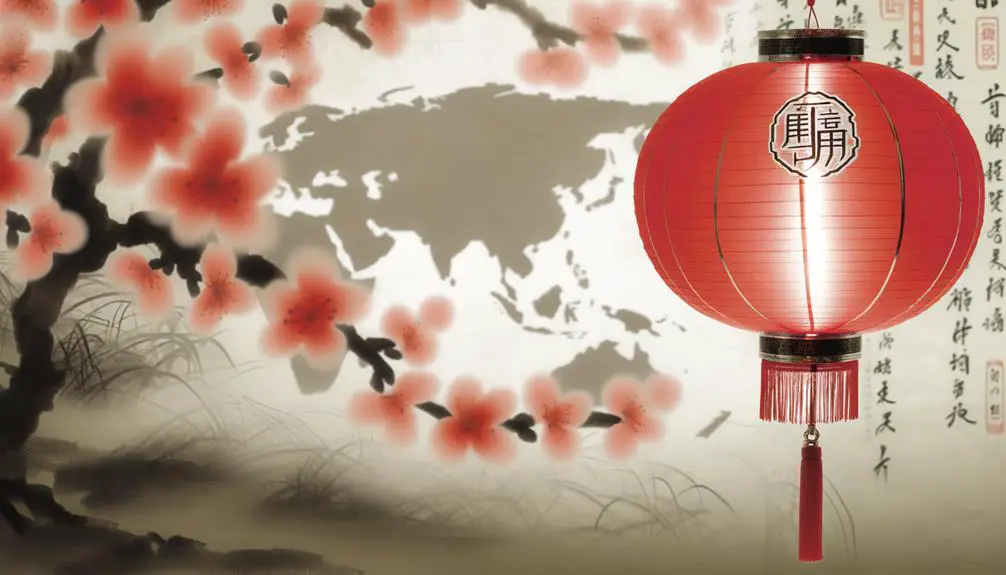
The global influence of the Chinese symbol for 'family forever' is evident in its widespread adoption and adaptation across various cultures, reflecting universal values and the human quest for enduring familial connections.
This symbol transcends linguistic barriers, appearing in diverse forms such as tattoos, home décor, and literature, solidifying its place in the global cultural lexicon. Its adoption signifies a shared appreciation for the familial bond, resonating deeply in societies that prioritize kinship and heritage.
The symbol's aesthetic elegance and profound meaning have made it a popular motif in international art and design, showcasing the seamless integration of traditional Chinese culture into contemporary global contexts. This widespread use underscores the symbol's enduring relevance and universal appeal.
Conclusion
The Chinese symbol for 'family forever' serves as a timeless tapestry, weaving together threads of history, culture, and art. Its intricate strokes encapsulate the essence of familial bonds, enduring through centuries as both a cultural cornerstone and an artistic muse.
Like an ancient tree with roots deep in the soil of tradition, this symbol continues to flourish, its branches extending across the globe, uniting diverse interpretations and modern adaptations in a universal embrace of kinship.

